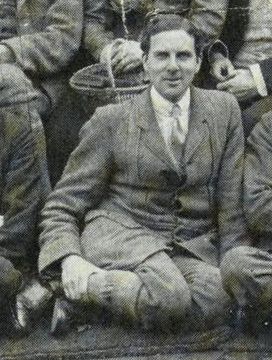Hugh Hamshaw Thomas facts for kids
Quick facts for kids
Hugh Hamshaw Thomas
|
|
|---|---|

Hugh Hamshaw Thomas, 1913
|
|
| Born | 29 May 1885 |
| Died | 30 June 1962 (aged 77) |
| Nationality | British |
| Alma mater | Downing College, Cambridge |
| Awards | Darwin-Wallace Medal (Silver, 1958) Linnean Medal (1960) Fellow of the Royal Society |
| Scientific career | |
| Fields | Paleobotany |
Hugh Hamshaw "Ham" Thomas was a very important British scientist. He was born in Wrexham, Wales, on May 29, 1885. He became famous for studying ancient plants, a field called paleobotany. This means he looked at fossils of plants to understand what life was like millions of years ago. Thomas passed away in Cambridge, England, on June 30, 1962.
Contents
A Life of Discovery
Hugh Hamshaw Thomas was known for his amazing work. He combined his love for plants with new technologies. This helped him make big discoveries about how plants have changed over time.
Early Life and Learning
Thomas grew up in Wrexham, where his father was J.T. Thomas. He went to Grove Park School in Wrexham. Later, he studied at Downing College, Cambridge. After finishing his studies, he became a university teacher. He taught botany, which is the study of plants. He also managed the museum in the Botany Department.
Science in the Skies
Hugh Hamshaw Thomas used his skills to help his country during wartime.
World War I Contributions
During the First World War, Thomas worked as a Photographic Officer. He was part of the Royal Flying Corps. He used cameras on airplanes to take pictures. These pictures helped him study plants and landscapes from above. This was a very new and clever way to use photography.
World War II Contributions
In the Second World War, Thomas continued his important work. He was a Wing Commander at RAF Medmenham. Here, he looked at photos taken from the sky. This was called aerial reconnaissance. He could figure out what was happening on the ground just by looking at these pictures.
His ability to understand these photos was very special. He even helped investigate a German research center. This center was located at Peenemünde. The South African Prime Minister, Jan Smuts, who was also a famous botanist, once called Thomas "the world's leading palaeobotanist." This shows how respected Thomas was in his field.
Important Awards and Recognition
Hugh Hamshaw Thomas received many honors for his scientific work.
Fellow of the Royal Society
In May 1934, he became a Fellow of the Royal Society. This is a very high honor for a scientist in Britain. They recognized his "original contributions of great value" to paleobotany. They praised his work on ancient plant leaves and new types of plants. His research on a group of plants called the Caytoniales was especially important.
Linnean Society Medals
Thomas was also the president of the Linnean Society of London from 1955 to 1958. This is a famous society for natural history. He received two very special awards from them:
- The Darwin-Wallace Medal in 1958.
- The Linnean Medal in 1960.
These awards showed how much his work was valued by other scientists.
Later Life
Hugh Hamshaw Thomas continued his scientific work throughout his life. He passed away in Cambridge in 1962. His discoveries helped us understand the history of plants on Earth much better.

